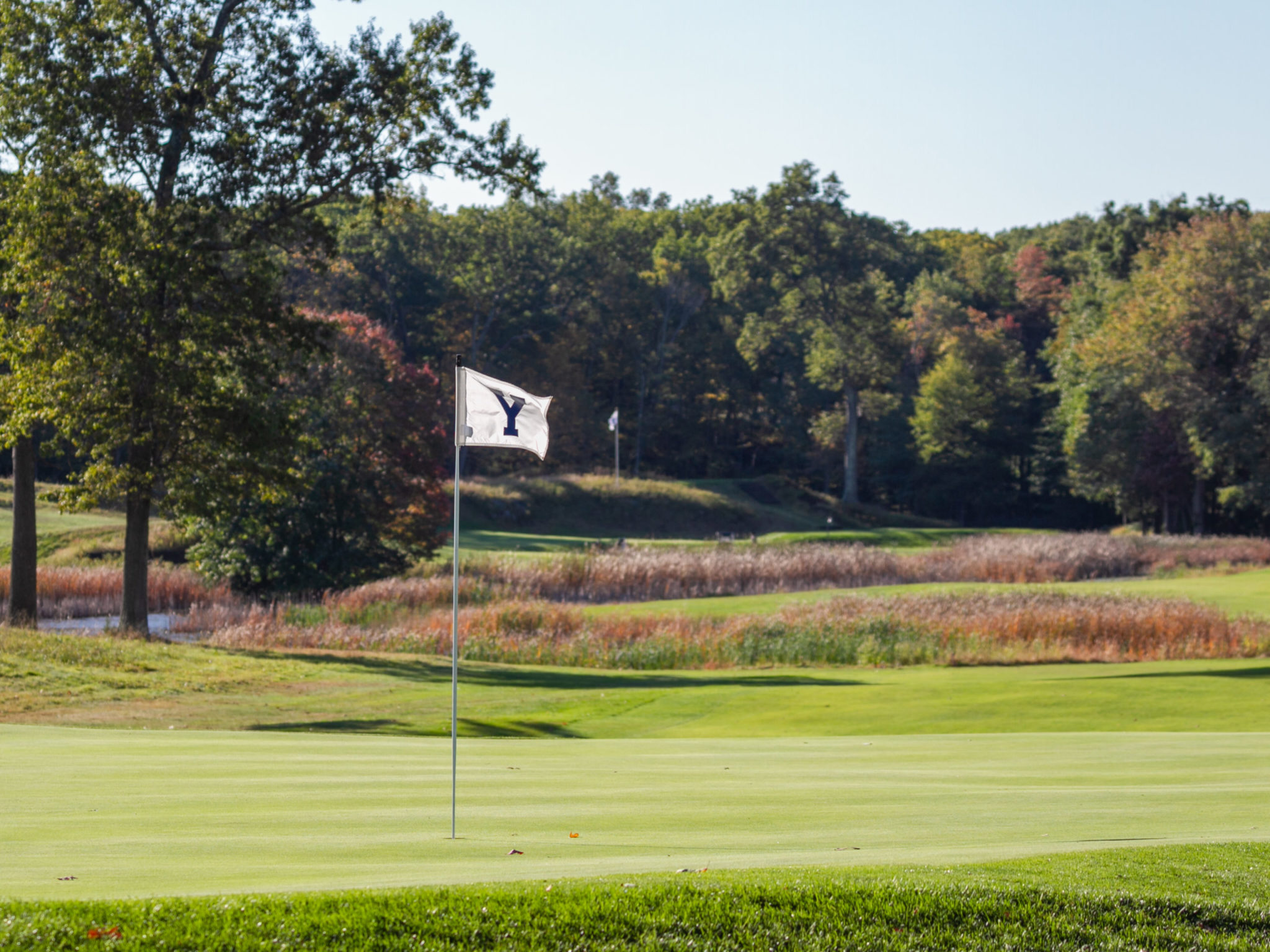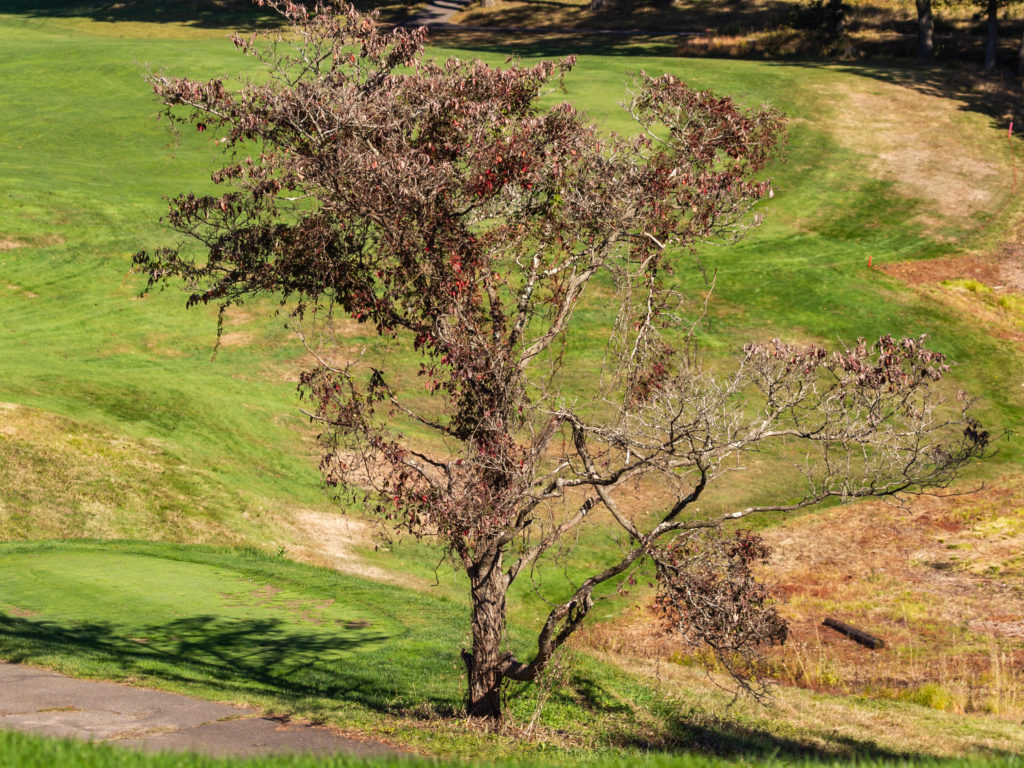Yale Golf Course reopens under new GM Palacios
The Yale Golf Course reopened to in-state golfers on Monday under new general manager Peter Palacios.

muscosportsphotos.com
After almost nine months of closure, the Yale Golf Course reopened on Monday under newly appointed General Manager Peter Palacios Jr.
The Yale Golf Course closed for the season last November and remained out of service for an unusual amount of time due to the COVID-19 pandemic. During the closure, Yale lost golf course superintendent Scott Ramsay, who had been at Yale for 17 years, along with General Manager Peter Pulaski, who had served at the post for two decades. To fill Pulaski’s vacancy, the University hired Palacios in late August as the course’s new GM.
The position of superintendent remains unfilled, and Palacios — who came from the Wisconsin Golf and Country Club in Eau Claire, WI — said that finding a replacement for Ramsay was going to be one of his priorities when the offseason begins this winter. Currently, Mathew Golino is the acting superintendent. Golino has been with the course for over nine years and has a degree in Turfgrass and Soil Science from the University of Connecticut.
“There was no intent to move out of Wisconsin,” Palacios said. “That [move to Wisconsin] was somewhat going to be our [family’s] final move, but with this opportunity coming up here at Yale, there was no question I had to put my name in the hat for this one. This was a once-in-a-lifetime opportunity.”
The appointment of Palacios represents a renewed commitment by Yale’s Athletic Department to make the golf course a more central part of the department’s goals and objectives for the future. The Yale Golf Course is one of the most unique facilities that Yale has to offer — not only for its rich history, beginning when the course opened for play in 1926, but also in its semi-autonomous state of governance. But until now, the relationship between the department and the course has been distant, Palacios said, with the University allowing the course to function mostly independently.
Palacios is originally from Laredo, TX and comes from a golf family. Palacios’ father played in the Mexican tour and owned a golf shop in the Rio Grande Valley for more than 30 years, and Palacios’ uncle worked as the resident golf pro for a country club in Saltillo, Mexico. After playing golf and earning his bachelor’s degree at St. Mary’s University in San Antonio, he worked as the golf pro in the Laredo Country Club before moving into his first general manager job at the Raveneaux Country Club in Houston. The industry has taken Palacios all over the country — from Texas to Florida, then Wyoming and Wisconsin before finally coming to Connecticut.

But it was in his native Laredo that Palacios really learned the business side of golf. These lessons included learning more about the agronomy, the science behind landscaping, that comes with maintaining a golf course and how to manage a country club course with more amenities.
Palacios is keenly aware of the importance of his position as general manager. He knows the depth of Yale’s golf history, and he feels his time as a college golfer will help him balance the unique interests and challenges that come with managing a university course as opposed to a country club. One of his first changes as general manager is to make the golf course free to play for Yale students weekdays after 12 p.m.
“The goal is to number one, restore the golf course to its original design and bring the golf course playability conditions back up to championship-caliber level in order to host NCAA tournaments and other big events,” Palacios said. “Even though we are three miles apart [from campus], apparently there is a big disconnect between the University and the golf course, and one of the main goals is to try and reconnect that. The primary goal is number one to get the students involved and get the students educated into what value the golf course can bring to them.”
Most students are unaware of the rich history and the high esteem the Yale Golf Course receives in golf circles. Golf Club Atlas, a website that focuses primarily on golf course architecture and grades courses based on how much they uphold the values of the game, ranked Yale as the 127th best golf course in the world and 58th in the United States in its most recent set of rankings released last weekend. This high ranking was achieved despite the website commenting that the course’s place on the list could be 100 spots higher were it not for its “iffy presentation.”
Currently, the ninth hole, known as the course’s signature hole and named “Biarritz,” is closed due to construction on the dam. Other aspects of the course are also still closed — the course’s reopening guidelines explain that due to COVID-19 policies, all of the indoor facilities from the clubhouse to the driving range will likely remain closed for the short season that remains. Additionally, only residents of the state of Connecticut will be able to play until further notice.
This past summer, amid the vacancies of both the general manager and superintendent, the course’s conditions started to deteriorate. Course members, including two faculty members, raised concerns about the poor state of the course, prompting larger conversations about whether Yale’s nationally ranked course would “ever return to its former glory,” as Golf.com wrote in a headline.

“It was really after my time,” former superintendent Scott Ramsay said about the course’s subpar conditions this summer. “The entire University shut down, every single staff person went home and the course suffered from that. Golf in Connecticut was considered an approved activity and the maintenance of golf courses was an approved activity, but the way the University is structured and the way that they wanted to protect employees, they drew a line in the sand and said there wouldn’t be any staff at the golf course maintaining it.”
Ramsay accepted a job at Farmington Country Club in early 2020 and concluded his 17 years at Yale in March. When asked about the departure of former general manager Pulaski, who left in June, a spokesperson for Yale Athletics said the department could not comment on personnel matters.
Now, the course has Palacios in charge, and in addition to hiring a superintendent, he said improving the course’s condition when it opens for the 2021 season will be a priority. Ramsay said that there are normally around eight to 10 union employees working on the course year-round, but this number fluctuates, especially in the summer when the course hires dining hall employees and student-athletes to help with the course’s maintenance.
After starting at Yale in the fall of 2003, Ramsay’s work as the superintendent of the course included an overhaul of the drainage and irrigation systems. The average golfer might not notice this kind of upgrade, but William Kelly, an expert of Yale’s golf history, professor of anthropology and Yale’s Sumitomo Professor of Japanese Studies, said it is incredibly important when one considers the large carbon footprint that golf courses can have.
“I play golf, I like golf, [but] I have a lot of doubts about the environmental sustainability of a sport like that,” Kelly said. “Scott Ramsay has been one of the people, as superintendents across the country, that has tried to introduce sustainable practices to the Yale course.”
Palacios was four years old when he started playing golf.
Eugenio Garza García | eugenio.garzagarcía@yale.edu
Clarification, Sept. 29: This article has been updated to better reflect the state of the current leadership of the maintenance department of the Yale Golf Course.







